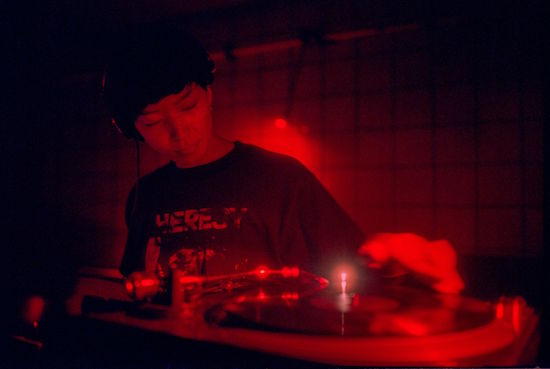Lil Mofo photo by Helge Mundt
“Perhaps the groups of people interested in a festival like Atonal are too polytheistic for a common political or social program to be possible or even desirable,” <a href="
http://thequietus.com/articles/16036-berlin-atonal-festival-preview-interview" target="out">said the curators of Berlin Atonal back in 2014. “Political and artistic values seem to be more separate now, compared to when the original editions of Atonal happened.”
If there’s a summary for Atonal is today, the festival’s curators already articulated it years ago.
The recent incarnation of the festival was inaugurated back in 2013, just over 30 years after its predecessor began. It was initially founded by Dmitri Hegemann in 1982, and hosted Einstürzende Neubauten, Clock DVA and 808 State. Hegemann continued to run the festival until the wall fell, before going on to found Tresor.
It’s safe to say that the venue and festival’s legacy are tremendous, but whether its current incarnation lives up to its history or reputation is another matter. This isn’t meant in a nostalgic sense. “Better days” of Berlin won’t be romanticised here, though the reality of Atonal today is that it takes place in a drastically different city.
The legacy of Hegemann and Tresor can be credited, to an extent, for the wealth of experimental and electronic music that defines Berlin today. But 30 years on, globalisation, gentrification, and a host of other circumstances inevitably have reshaped the roles that music events and communities occupy.
The programming at this year’s Atonal is good – as it always is. Gorgeous sets are played by Caterina Barbieri, and Stephen O’Malley + Kassel Jaeger. Klara Lewis brings warm ambience, accompanied by hazy, nostalgic imagery, to the main stage.
Adventures through breaks also make for a number of highlights. Fragmented breaks, courtesy of Sophia Loizou, scuttle over the tiled walls of Ohm on Friday in a display of the Bristol-based ghostly, disintegrating jungle. Influential drum and bass Paradox plays a dark, twisted classic live set at Stage Null on Friday, which is a thrill to get to hear in Berlin.

Group A photo by Helge Mundt
Sunday’s closing programme sees the German premiere of a collaboration between adventurous, noisy duo group A and video artists Dead Slow Ahead. Blistering sonics, assembled from cries, violin whines and hefty electronics, are accompanied by some of the more noteworthy visuals that the main stage sees all festival. Dead Slow Ahead bring desaturated, industrial psychedelia to Kraftwerk.
And, for all the Serious Music, there’s a necessary helping of fun too. Simo Cell and Low Jack play an energetic b2b, bouncing off of one another with an exceptional amount of momentum. The two keep the Ohm crowd howling with every other selection. Meanwhile, on Stage Null, Peder Mannerfelt and Pär Grindvik’s Aathsma Aatonal Aall-Stars deliver an electrifying set. The two are accompanied by an all-star cast of tireless dancers, such as Lyra, Cera Khin and Dale Cornish, draped in neon yellow raincoats.
Another key performance arrives in the form of Gábor Lázár’s new A/V show. Fractured wubs and wahs are thrown together, married with an incessant strobe assault. Lázár’s synth twitters make for a gracious counterpoint to the hulking, industrial establishment of Kraftwerk, and the skittering, slippery stabs mark the one of the best moments for the Stage Null soundsystem.
Thanks should also be given to the festival’s collaboration with Japanese partners. Atonal has the resources to spoil Europe-based audience members by featuring artists they normally may not get to hear – Yousuke Yukimatsu, Killer-Oma and Lil Mofo grace the festival’s various stages through the week. Lil Mofo brings eccentric mixing and eclectic selections down to Ohm. Mofo pulls off ambitious mixes, traipsing through vintage breaks and infectious rave, even dipping occasionally into deep, murky electro.
Ultimately, for all riches that the curation, venues and soundsystems provide, the festival still manages to feel a little empty. It seemingly reflects the ‘separated’ values and ‘polytheistic’ audiences that the festival’s curators described four years ago. After all, it’s difficult for the typical A/V show to be earth-shakingly radical. And at the end of the day, that’s not what they promised us. A festival so tied to its city’s history is certainly very enticing for those who don’t have access to the spoils of Berlin. A very straight tourist crowd, gendered toilets, and the persistence of Snapchat and Instagram Stories reminder us of the privileges of Berlin’s less momentous affairs.
While it stems from a groundbreaking legacy, the current editions of Atonal opt largely for musical loyalty, rather than trying to pave a new path. Ultimately, Atonal knows what it likes, and what it’s good at. Many in the audience have come to see the grandiose Kraftwerk, dance to techno in the famed Tresor, and hear good music on impressive soundsystems – and that’s what they get.


